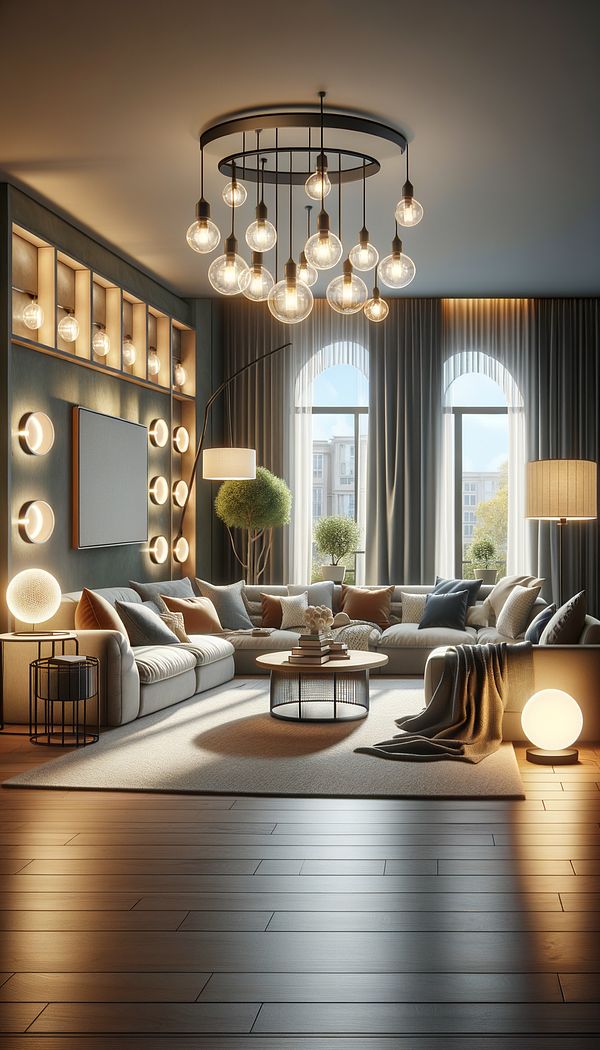What is LED - Light Emitting Diode?
LED stands for Light Emitting Diode, a highly efficient and long-lasting source of light.
Description
LED, or Light Emitting Diode, represents a significant advancement in lighting technology. Different from traditional incandescent bulbs, LEDs emit light when an electrical current passes through a microchip, illuminating tiny light sources called diodes. This method of producing light is highly efficient, converting a larger proportion of energy into light rather than heat. As a result, LEDs tend to have a much longer lifespan and are more energy-efficient compared to other lighting options.
In the context of interior design, LEDs offer versatile lighting solutions. They are available in a wide range of colors and brightness levels, making them suitable for various applications - from accent lighting to main ambient lighting. LED lights can be integrated into floor lamps, pendant lights, and even smart lighting systems, allowing for customization and control over the lighting atmosphere of a space. Furthermore, their compact size allows for innovative design opportunities, such as integrated lighting in furniture or architectural elements.
The environmental impact of choosing LEDs over traditional lighting is also noteworthy. LEDs consume less power and have a longer lifespan, which means fewer resources are used over time for lighting needs. This contributes to a reduced carbon footprint, aligning with sustainability and eco-friendly design principles.
Usage
LEDs are applied in various settings, including residential, commercial, and public spaces. In homes, they might be used in kitchen under-cabinet lighting for task illumination, or in living rooms for ambient lighting with dimmable options for versatility. Commercially, LEDs are often chosen for their efficiency and durability in office buildings, retail spaces, and outdoor signage. For public lighting, such as street lamps and park lights, LEDs offer energy savings and reduced maintenance costs.
FAQs
-
How do LEDs compare to incandescent bulbs in terms of efficiency?
LEDs are significantly more efficient than incandescent bulbs, converting a greater portion of energy into light with less waste heat. This makes them more energy-efficient and able to last longer.
-
Can LED lights be dimmed?
Yes, many LED lights are dimmable, providing flexibility in controlling the lighting atmosphere of a room. However, it's important to ensure that both the LED bulb and the dimmer switch are compatible.
-
Are LED lights better for the environment?
Yes, due to their energy efficiency and longer lifespan, LEDs reduce the need for frequent replacements and consume less power, leading to a smaller carbon footprint.
-
What color temperatures are available for LED lighting?
LED lights come in a range of color temperatures, from warm whites (2700K) mimicking the soft glow of incandescent bulbs, to cool whites (6500K) offering a brighter, more invigorating light, suitable for a variety of applications and preferences.
Practical Application
When incorporating LED lighting into your design, consider the color temperature and brightness to match the intended ambiance of the space. Experiment with different placement options, such as under cabinets or integrated into furniture, to achieve a unique and customized lighting scheme. Also, be mindful of purchasing compatible dimmer switches if you plan to use dimmable LED bulbs for added flexibility.
-
Architectural Elements199 articles
-
Furniture Types599 articles
-
Lighting111 articles
-
Sustainability & Eco-Friendly Design69 articles
-
Ribbon BandA decorative element used in various aspects of interior design.
-
VerdigrisVerdigris is a green or bluish patina formed on copper, brass, or bronze surfaces.
-
SofaA large, cushioned seat designed to accommodate multiple people.
-
OnlayAn ornamental design applied to the surface of objects.
-
BakeliteBakelite is an early form of plastic known for its durability and heat resistance.
